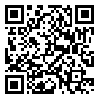Volume 25, Issue 1 (January 2024)
Modares Mechanical Engineering 2024, 25(1): 23-32 |
Back to browse issues page
Download citation:
BibTeX | RIS | EndNote | Medlars | ProCite | Reference Manager | RefWorks
Send citation to:



BibTeX | RIS | EndNote | Medlars | ProCite | Reference Manager | RefWorks
Send citation to:
Shahsbi Y, Mirshekari E. Application of Neuro-Fuzzy Network for Optimizing Steam Pipeline Expansion Loops in Process Industries. Modares Mechanical Engineering 2024; 25 (1) :23-32
URL: http://mme.modares.ac.ir/article-15-78535-en.html
URL: http://mme.modares.ac.ir/article-15-78535-en.html
1- Ahvaz Branch, Islamic Azad University
2- Ahvaz Branch, Islamic Azad University, ,erfan.mirshekari@gmail.com
2- Ahvaz Branch, Islamic Azad University, ,
Abstract: (300 Views)
This research examines the optimization of expansion loops in steam pipeline systems using a neuro-fuzzy network. Stress analysis was conducted based on the ASME B31.3 design code using CAESAR II software. Additionally, a neuro-fuzzy network was developed and optimized in MATLAB. The results indicate that the neuro-fuzzy network outperforms traditional methods and the MLP neural network. Combining this network with the Bee Colony Optimization algorithm led to the identification of an optimal loop that minimizes pipeline length and reduces static and thermal stresses. The optimized loop obtained from the Perceptron network increased the loop length by 20 cm (1.14%) and reduced the total sum of standard stresses by 14.6%. In contrast, the optimized loop from the neuro-fuzzy network reduced the loop length by 120 cm (6.78%) and decreased the total sum of standard stresses by 9.5%. These findings demonstrate that the application of artificial intelligence techniques in expansion loop design significantly reduces thermal stresses and enhances design efficiency
Article Type: Original Research |
Subject:
Plumbing & Air Conditioning
Received: 2024/12/17 | Accepted: 2025/02/22 | Published: 2024/12/30
Received: 2024/12/17 | Accepted: 2025/02/22 | Published: 2024/12/30
Send email to the article author
| Rights and permissions | |
 |
This work is licensed under a Creative Commons Attribution-NonCommercial 4.0 International License. |






